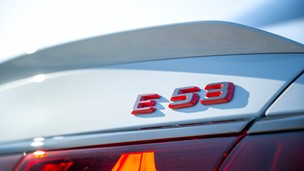Compared to some of the supermini big guns, like the Ford Fiesta and Vauxhall Corsa, the Hyundai i20 has always looked a little mundane. However, the latest revamp of swept-back headlamps, a floating roof design and longer wheel base make it look less plump and a tad sportier.
Hyundai has even enhanced its appeal by offering a two-door coupe version. With stiff competition in the supermini market, something like a new face can be a massive boost for a model. The i20 still has to tackle its competitors’ impressive driving dynamics however, as well as the growing number of frugal, yet enjoyable, engines available.
Performance
The i20 offers some archetypal supermini engines, with a 1.2-litre petrol and 1.4-litre diesel likely to attract most buyers. The 1.2-litre comes in two power outputs – 74bhp and 83bhp, with the latter reaching zero to 62mph in 13.1 seconds. The 1.4-litre diesel on the other hand offers 88bhp and achieves the same sprint in 11.6 seconds. There is also a 74bhp 1.1-litre diesel on offer – reaching 62mph in 16 seconds.
The quickest engine in the range is a 1.4-litre petrol producing 99bhp. This sprints to 62mph in 11.6 seconds – and although this still sounds relatively slow, it feels quite fast as you get a decent amount of low down torque.
Many will be rightly wondering ‘what about a 1.0-litre turbo? Ford has the EcoBoost and Vauxhall has the ecoFLEX.’ Well, Hyundai plans to rectify this omission by introducing a new 118bhp 1.0-litre three-cylinder turbo later in 2015, which should hopefully bring it up to speed with the competition.
Ride and Handling
The light steering will favour those who are prone to nipping in and around city streets.
Unlike the Ford Fiesta, the i20 fails to offer you a drive you can truly have fun with. But that’s not to say the i20 is poor, far from it. Like the Hyundai ix35 SUV, the i20 is built for comfort, with a supple suspension, making easy work of uneven surfaces and speed bumps, comfortable seats that hug you in, and incredibly easy to manoeuvre steering, thanks to its light feel. The light steering will also favour those who are prone to nipping in and around city streets. This means the i20 resides more in the ballpark of the Citroen C3 when it comes to competition, as opposed to the usual Ford and Vauxhall suspects. What you also get with the i20 is great insulation at motorway speeds, allowing you to use features like Bluetooth without quarrel.
Interior and Equipment
The Hyundai i20 and Kia Rio share a platform and many of the same components.
Hyundai has a good track record for offering plush interiors and thankfully the i20 lives up to expectations. Compared to the previous model, the interior has grown up massively, with a completely reworked instrument panel and more soft-touch materials. One thing that did catch our eye about our test car was the absence of a touchscreen system. If you really can’t do without one, then you can opt for a touchscreen sat-nav on the flagship trim models, but more and more superminis are starting to introduce fully-integrated touchscreen systems on some of the lower trim levels – the Vauxhall Corsa and its Intellilink system being one of them. Standard kit on all models is not too shabby, with front electric windows, rear tinted windows and USB connectivity all thrown in on the entry level S model. To add air conditioning you will have to go a step up to S Air. Highlights of the top of the range Premium SE trim include comfort features like heated front seats, a panoramic glass roof and parking sensors. In the rear, the i20 offers a substantial amount of leg room, similar to that of a large hatchback or SUV. Head room, however, is a little limited due to the i20’s stylish exterior shape. Boot space stands at 326 litres, which is bigger than the Corsa and Fiesta. The boot also has a handy variable floor level feature for models specified with anything above the second trim.
Cost
Although you pay more for the i20 than many of its rivals, you do get a noticeably more lavish interior.
Price wise, the i20 sits just above the Ford Fiesta and Corsa, but costs less than the Renault Clio. It is also slightly more expensive than the Kia Rio, a model that it shares a platform with. Although you pay more for the i20 than many of its rivals, you do get a noticeably more lavish interior. When it comes to efficiency, the i20 is really in need of a 1.0-litre unit, however, the 1.1-litre diesel already on offer has low CO2 of just 84g/km and claims to return an average of around 88.3mpg. There is also Hyundai’s impressive five-year warranty, a big selling point, especially for potential family car buyers.
Our Verdict
The facelift of the i20 is a perfect example of how some slight tweaks can give a model more character and enhance its appeal. If you are after an affordable supermini that is comfortable, classy and practical, then the i20 is one of the class-leaders. But those after enthralling driving dynamics should look more towards the Fiesta. Hyundai could still do with bringing the i20’s interior tech a little more up to date as well – primarily the touchscreen set-up - but build quality is still extremely impressive. All in all, good job Hyundai.




